This is my first year starting plants from seeds. I’ve lovingly tended the plants, from seed to sprout, and then to full-on stems with leaves. It is so rewarding to watch these sprouts burst through the dirt, and view their growth every day. Now that we’re finally past the cold weather in Missouri, it’s time to move my plant babies out into the real world: the garden.

When deciding what kind of garden beds to create, my husband and I considered the standard fare. We settled on something a little different – corrugated steel raised beds by Vego Garden. This type of garden is attractive because it boasts a 20+ year life expectancy, offers a height that reduces bending while gardening and just looks cool (in my opinion).

After assembling the garden beds (they are modular, and take about 45 minutes per bed to put together), each needs to be filled. We chose to create beds in Vego’s classic sizes: 3.5 ft x 6.5 ft and 2 ft x 8 ft. At 17 inches tall, these beds would require a lot of potting soil to fill their volumes. The Vego website offers some great tips for getting started, one of which is how to fill the raised beds and save money. Gather your tools, helpers (if you have ’em) and dig in!
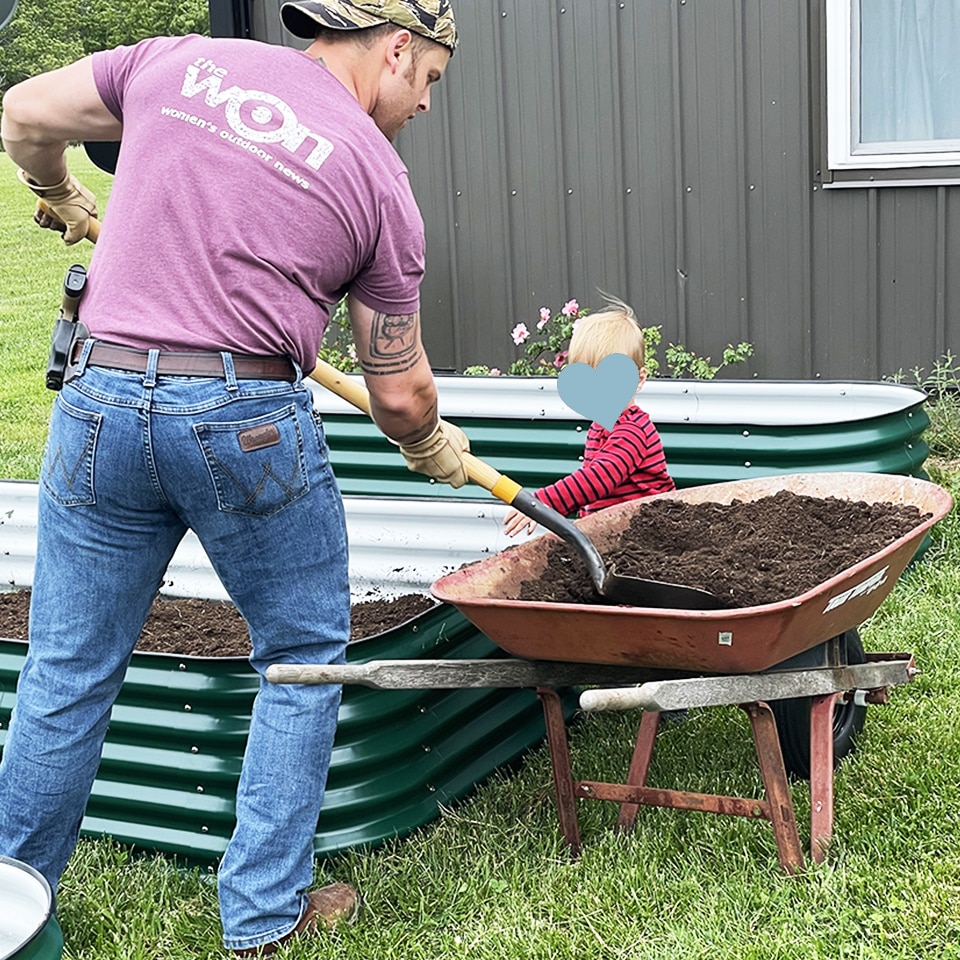
A summary of the Hugelkultur process of filling raised garden beds, taken from the Vego website:
Hugelkultur is the process of layering organic garden waste inside the raised garden bed, before adding soil to save on costs, in addition to attracting and preserving moisture. Of German origin, hugelkultur translates to “mound or hill culture.” It is especially applicable in areas where soil retention and drainage are poor, which is typical of soils found in urban areas.
The materials used include large rotting logs, sticks and other debris that are layered with grass clippings, coffee grounds, compost, and other organic matter. As the material breaks down, it creates a flourishing environment for beneficial fungi and microbes that mimics the natural landscape of a forest. There are many advantages to the Hugelkultur method, including soil quality improvement, minimal maintenance, and water retention.

Keeping the guidelines from the Hugelkultur method in mind, we used the following layers in our garden beds:



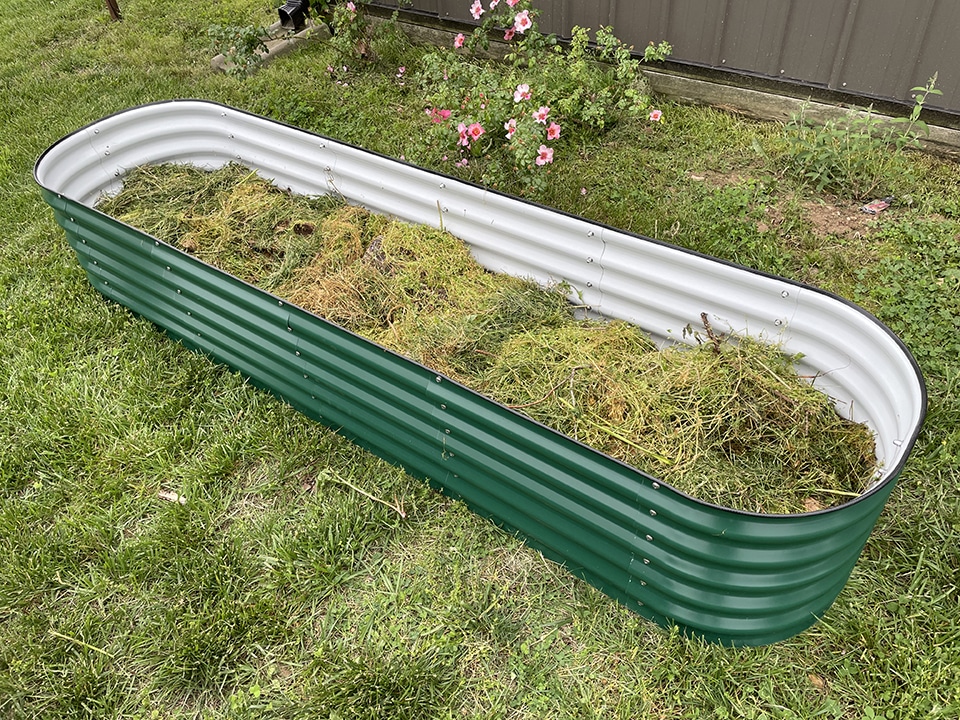

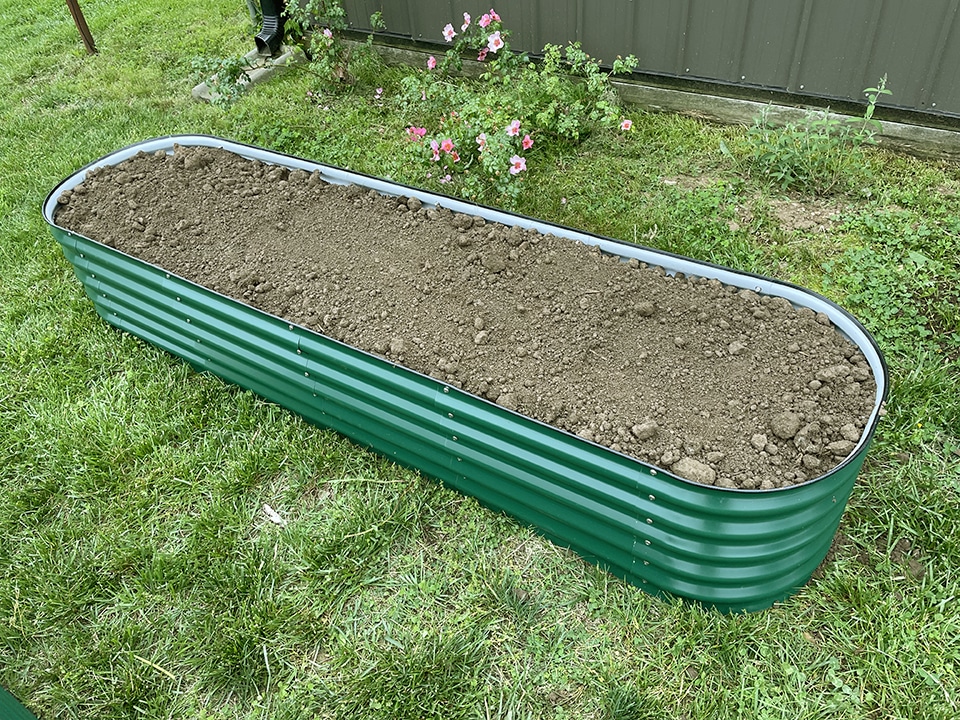
This particular bed will be used for growing tomatoes, so I threw in some coffee grounds between the compost and soil layers. Periodically I’ll add more grounds and some Tomato-tone to the soil to feed my tomatoes.
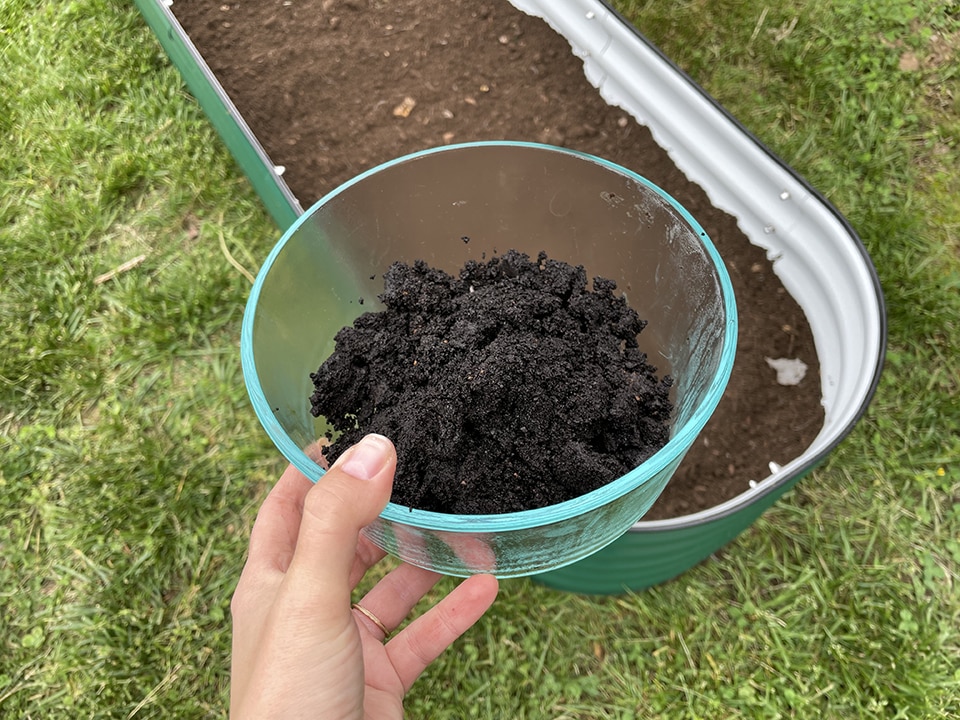
Next comes the fun part – the planting! This bed received various tomatoes (Orange Hat, Rebekeh Allen and Napa Rose Blush Tomatoes from Baker Creek), French Marigolds, basil and lettuce. The first three plants are good companions. The marigolds help keep pests away from the tomatoes, and the basil can enhance the flavor of the tomatoes.
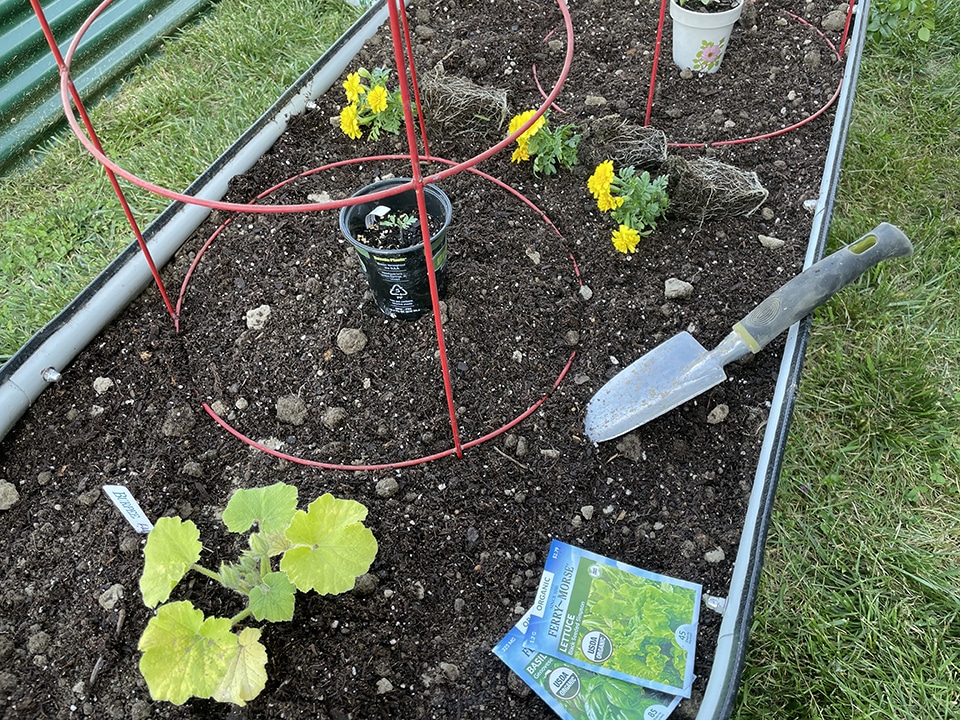

Voila! Raised garden beds filled at a fraction of the cost of using all potting soil.
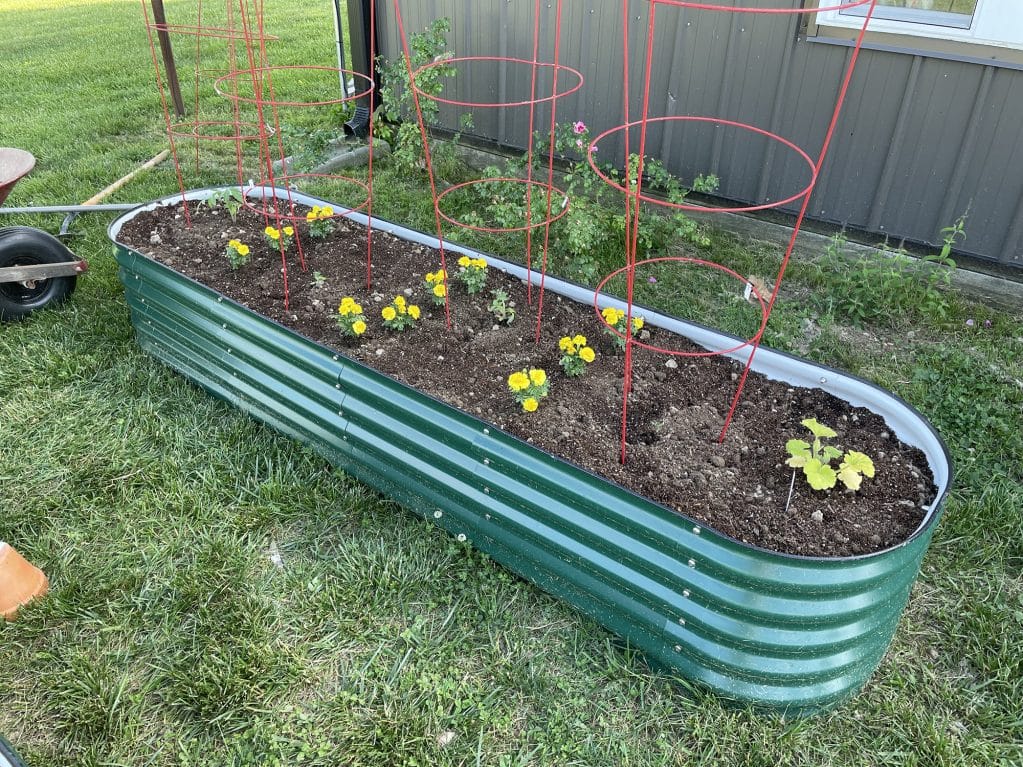
I ordered Vego Garden’s classic 17 in. tall, 9-in-1 Modular Metal Raised Garden Bed Kit in the color British Green. Those who know me well aren’t surprised by this color choice; I love all things British, and even lived there for a bit when I was younger. My mom is the one who instilled this love in me. She loves to visit the UK, and has even written a few posts about her shooting and hunting experiences while on the beloved island.

Jackie Baird Richardson is an interior designer, editor at The WON and avid junker. Watch for her design tips and occasional crafting ideas, bringing the outdoors indoors. View all posts by Jackie Richardson